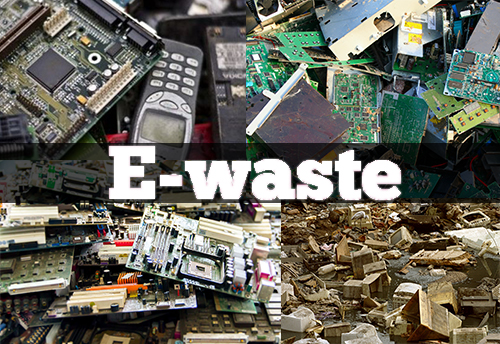

India generates more than 3 million MT of e-waste annually and has potential to reach to 20 million MT by 2020. We at E-Clean E-Green really understand our growing responsibilities with the growing volumes. We are committed to provide dynamic modules to handle increasing volume of urban mines of natural resources out of waste electrical and electronic equipment (WEEE).

E-Clean E-Green’s WEEE Recycling facility encompasses end-to-end processing of e-waste. As the first facility registered by the Central Pollution Control Board and authorised by the Maharashtra Pollution Control Board, our safe & secured WEEE Recycling process ensures complete protection of environment with maximum recovery out of end-of-life electronic equipment.
Our state-of-the-art de-manufacturing line combines high-tech automation and manual processing methods to sort, dismantle and shred e-waste. A member of the ISRI and Electronic Recyclers Association (ERA), E-Clean E-Green deploys WEEE Recycling processes that are efficient.
Leveraging our indigenously developed technology for precious metal recovery, we extract valuable materials such as copper, aluminium, silver, gold from complicated electronic scrap. E-Clean E-Green is in fact the only company to have received DSIR, Government of India, support for technology commercialization.

The electronic goods industry has seen a massive demand spurt due to new products which are being introduced. The introduction of these new products has resulted in outdated/unutilized electronic equipments also referred to as WEEE (Waste Electrical and Electronic Equipments). These WEEE have hazardous material such as mercury, lead etc and if not properly disposed can cause immense damage to the environment. The imminent threat which the electrical & electronic equipments can cause to the environment if not handled properly has now been widely understood and steps have been initiated for scientific WEEE recycling. ... The growing e-waste pile is a concern around the world and statistics show that it runs into millions of tons annually. India generates about 500,000 tons of waste annually, from electronic and electrical equipment (WEEE) which is practically being entirely and openly dismantled by the unorganized sector with the help of hand held tools like hammer, screw drivers, cutters, burners over and above acid, whereby the hazardous material is not dealt with properly, thus defeating the primary purpose for which WEEE recycling is undertaken.for Data Destruction & Lamp Recycling Facilities for on-site & off-site services amongst other value added services. The organized sector on the other hand uses WEEE recycling, a latest & environment friendly technology which not only ensures good health of the stakeholders but also recovers most of the materials used while making the product. Any equipment which uses either a plug or battery can be recycled using WEEE recycling. All types of obsolete electrical equipment including lighting, fridges and IT are treated safely by WEEE recycling. WEEE recycling storage containers are also used to keep the waste safe. Since, most of these components are made of commodities which are re-saleable and re-usable, it makes WEEE recycling industry economically viable with the supplies of the required quantity of WEEE. While modern technologies carry on nearly hazard-free WEEE recycling of e-waste, precaution must be taken to control harmful emissions and toxics from causing detrimental impacts on health and the environment.

Procuring e-waste from different sources such as businesses, households etc

Weighing and segregation of various e-waste for easy retrieval. Ascertaining repair, refurbishment and remarketing. Salvaging reusable components

Dismantling end-of-life equipment into various fractions like plastic, glass, metals, cables, PCBs etc. and segregating them for the convenience of WEEE Recycling

Shredding into smaller pieces. Separating metals from plastic. Recovery of metals such as aluminium, copper, precious metals.

Disposing of the hazardous elements for final disposal with the help of CHWTSDF.